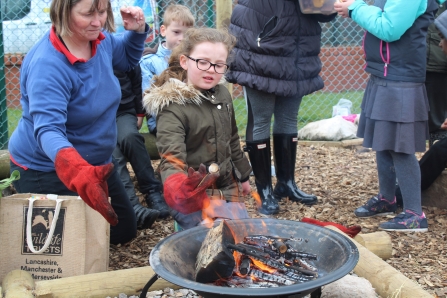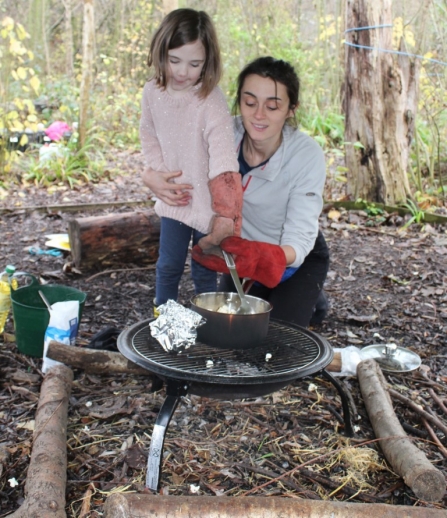There’s something both exciting and comforting about a campfire, and succeeding in creating fire yourself, without matches, can be very uplifting for one’s self-esteem. The first time I had a go at fire-lighting it took me a good ten minutes to turn a spark into a proper flame. I was tempted to give up but I persevered and after what felt like an eternity, the little piece of cotton wool I was trying to light was suddenly engulfed in fire. It gave me a real sense of accomplishment (and, after a lot of practice, I’m much better at fire-lighting now).
One of the most popular activities at Forest School is having a campfire. The children will often talk about it for weeks in advance and ask at the start of every session, “Are we having a fire today?”
An activity that involves a campfire can offer many benefits to learners’ development. Children gain knowledge and skills in fire-lighting and fire safety, which are both fun and help children learn to manage their own risks. A campfire is also a great opportunity and novel way of introducing learners to cooking. Preparing food and eating together around the fire fosters a sense of camaraderie among the group, promotes fine motor skills (by chopping and stirring), can boosts children’s confidence in their own abilities and can help promote a healthy relationship with food and nature, all of which can benefit learners in wider life.




